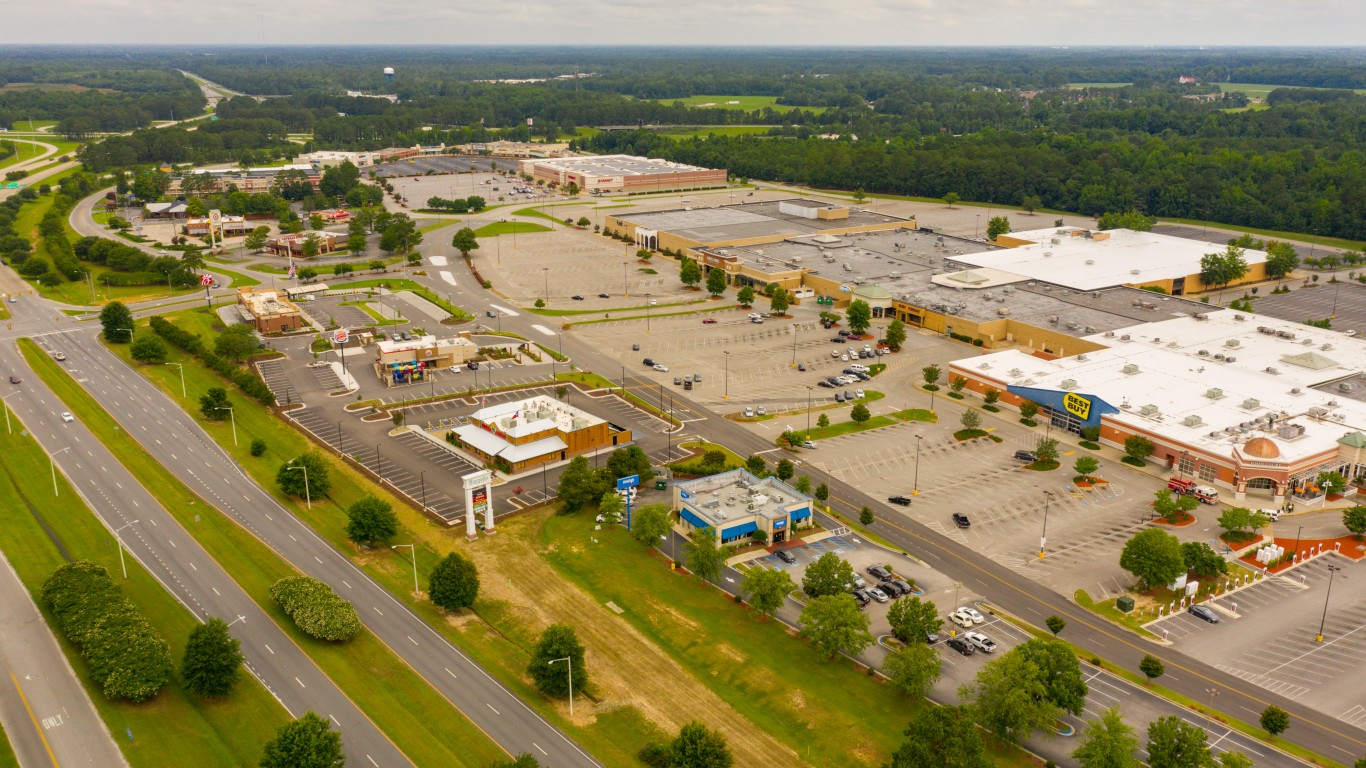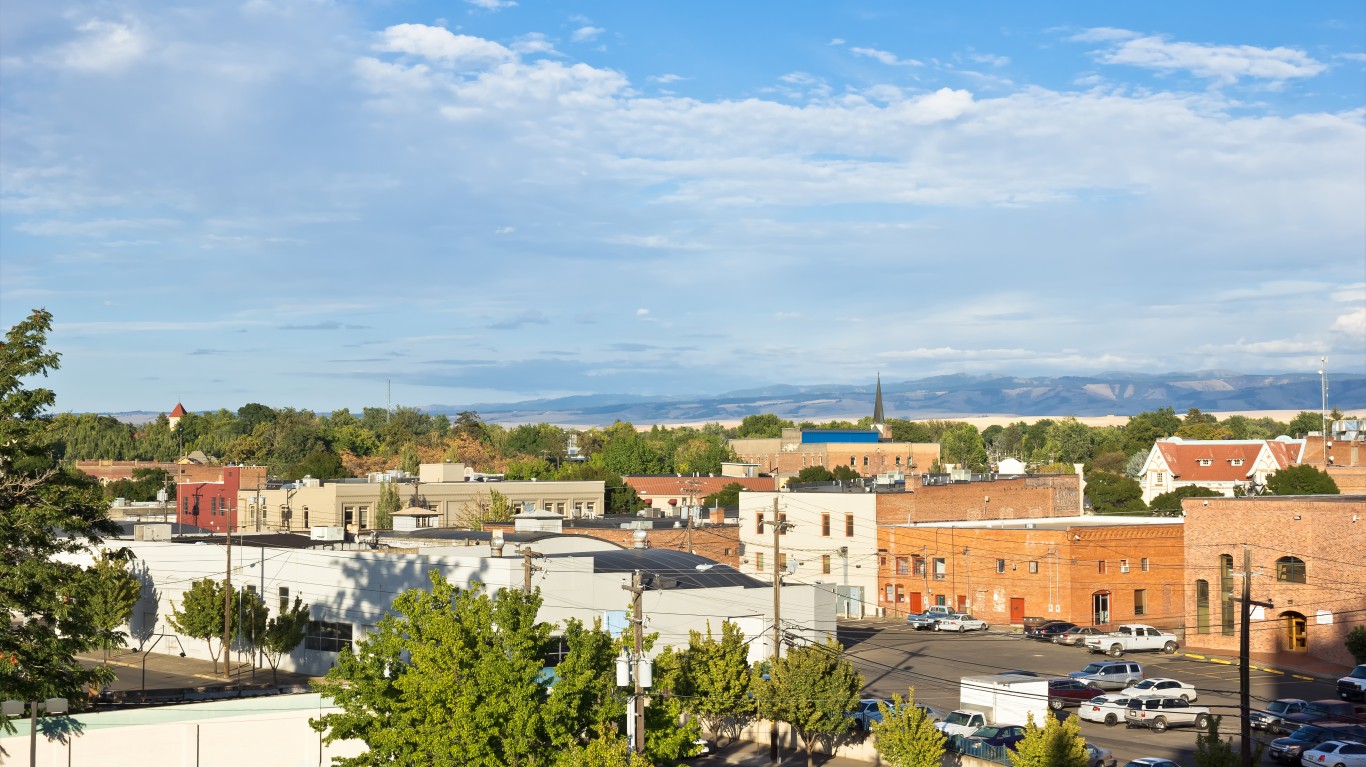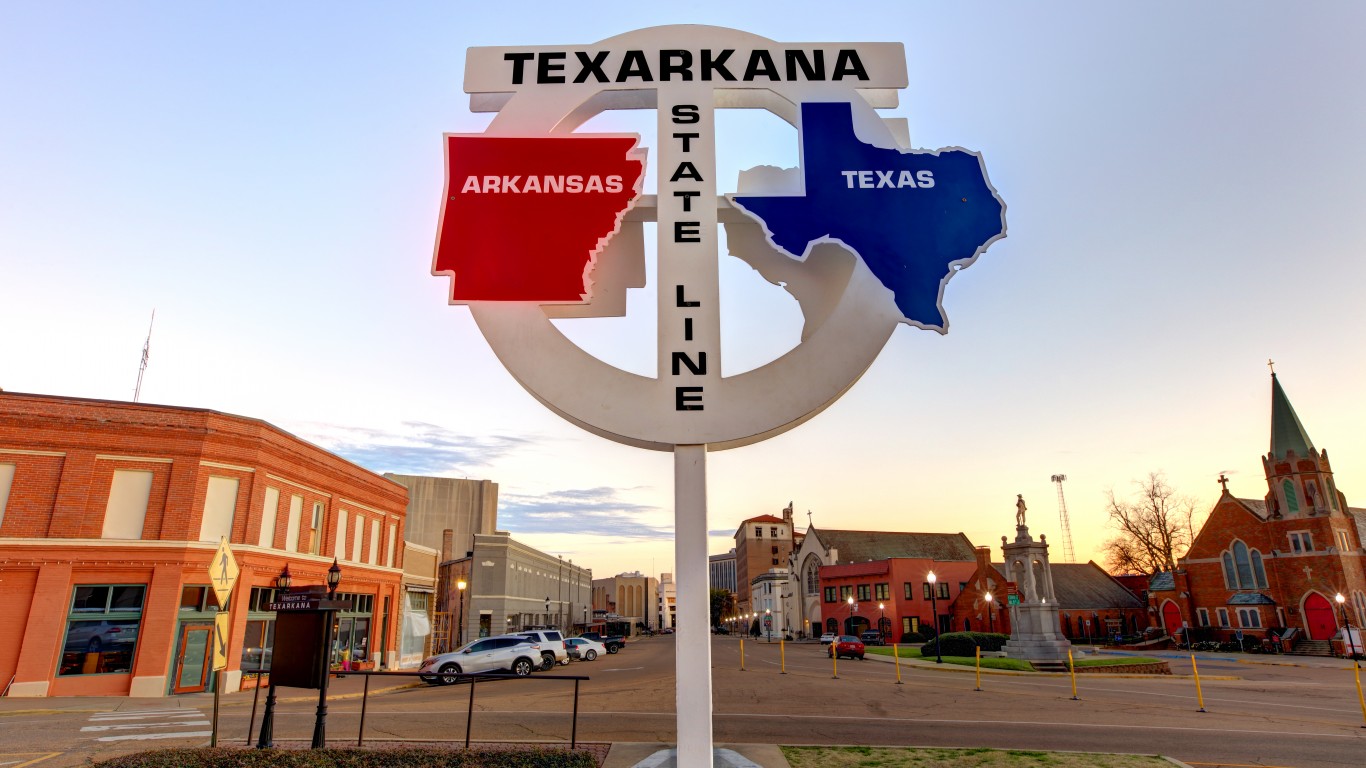Population and Social Characteristics
America's Fastest Shrinking Big Cities

Published:

The U.S. population has been growing at a historically slow pace in the past decade. It was the slowest in 2021, at a 0.2% increase, and only recovered slightly in 2022, with a 0.4% uptick. Because of this slow pace, the Census projects the population will begin to decline some time in the next 20 to 50 years except in its high-immigration scenario. Already, the populations of some large cities are shrinking.
To determine the fastest shrinking large cities, 24/7 Wall St. reviewed population data from the U.S. Census Bureau’s 2022 American Community Survey 1-year estimates. We listed all 43 metropolitan statistical areas with at least a 3% population decline from 2017 to 2022 in order of smallest to largest decline. Supplemental data on employment in December 2017 and December 2022 as well as unemployment rates came from the Bureau of Labor Statistics, and are seasonally-adjusted figures. Home value data came from the ACS.
While the nation’s population rose by 3.5% from 2017 to 2022, the populations of the cities on the list dropped anywhere from 3% to over 22%. Perhaps somewhat surprisingly, considering the job opportunities in the Silicon Valley metro, the list begins with the San Jose-Sunnyvale-Santa Clara metro area. Employment in the metro, however, has grown over that time. It could be people are moving out due to the high cost of housing, which remains the most expensive nationwide.
Other very large cities on the list include the San Francisco, Los Angeles, and New York metro areas, which respectively have the second, seventh, and 23rd highest home values of the metros considered. (Also see: States That Will Grow the Most by 2040.)
In the top five cities on the list, the population shrank by over 10% from 2017 to 2022 with the Kalamazoo-Portage metro area in Michigan losing over a fifth of its residents. The four Midwest cities and one Southern city also have considerably lower home values than the national median home value in 2022 of $320,900.







































The average American spends $17,274 on debit cards a year, and it’s a HUGE mistake. First, debit cards don’t have the same fraud protections as credit cards. Once your money is gone, it’s gone. But more importantly you can actually get something back from this spending every time you swipe.
Issuers are handing out wild bonuses right now. With some you can earn up to 5% back on every purchase. That’s like getting a 5% discount on everything you buy!
Our top pick is kind of hard to imagine. Not only does it pay up to 5% back, it also includes a $200 cash back reward in the first six months, a 0% intro APR, and…. $0 annual fee. It’s quite literally free money for any one that uses a card regularly. Click here to learn more!
Flywheel Publishing has partnered with CardRatings to provide coverage of credit card products. Flywheel Publishing and CardRatings may receive a commission from card issuers.
Thank you for reading! Have some feedback for us?
Contact the 24/7 Wall St. editorial team.